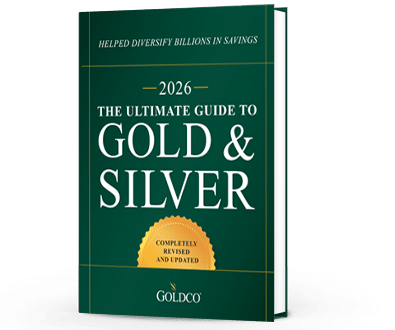Precious Metals Outlook 2026
After the turbulence and narrative whiplash of recent years - tariffs, fiscal volatility, shifting Fed reaction functions, geopolitics, and persistent questions about institutional credibility -...
Precious Metals

Looking at prices throughout the economy, you could be forgiven for thinking that everything is in a bubble. In fact, commentary on the “everything bubble” has existed for years. But it’s only in the last year or so that the massive rise in prices has become apparent to more and more Americans.
Because of the massive stimulus packages passed by Congress, more money has entered the financial system over the past year than at any other time in history. The national debt has exploded, the Fed’s balance sheet has nearly doubled, and the money supply has increased exponentially. The result has been higher prices throughout the economy.
From food to cars to houses, you can see prices rise by the month, or in some areas even by the week. For those looking to get a foothold into saving and investing, it doesn’t look promising. Nor does it look good for those on fixed incomes, whose purchasing power will be eroded as the prices of the goods and services they need continue to increase.
The existence of the everything bubble has pushed prices up for most things, but it has also led some people to posit erroneously that “everything” really is in a bubble. That includes traditional safe haven assets such as gold. Certainly gold has benefited from the everything bubble, but the yellow metal itself isn’t in a bubble, and here are four reasons why.
Having been used as a monetary metal for thousands of years, there’s hardly an asset out there that has the track record of gold. And when it comes to maintaining its value over time, there’s hardly anything out there that can match gold. Just look at the US dollar, which has lost 85% of its value since 1971 according to the government’s official inflation statistics, whereas an ounce of gold buys just as much or more as it did back then.
That stability over time is what makes gold so attractive to so many investors. Putting money in the bank is a guaranteed money loser, since inflation will sap the value of your dollars. But gold protects and defends against inflation, all while staying more stable than volatile financial assets such as stocks.
Gold particularly has a reputation for performing well during times when the economy is weak or struggling. During the 1970s, for instance, when stagflation pervaded the US, gold’s average annualized gains over the decade were over 30%. And during the aftermath of the 2008 financial crisis, gold nearly tripled in price.
Many analysts believe that gold will continue to demonstrate that same type of performance during the next major crisis, and there’s no reason to think that it won’t perform. After all, gold gained 25% in 2020 as a result of the lockdown-induced recession. And if it did that well in 2020, just imagine how well it could perform in the future during a much longer recession and recovery period.
Higher inflation benefits gold in more ways than one. On the one hand, the massive amounts of fiscal and monetary stimulus entering the economy are also entering the gold market. Many investors who see the writing on the wall are using the gains they have already made in stock markets, or even sometimes their stimulus funds, to purchase gold to hedge against a market correction and protect the value of their assets.
On the other hand, rising inflation also helps many investors realize that not all is well with the economy. It begins to set off warning bells in their head that tougher economic times are ahead, especially because it has been over a decade since we last saw interest rates and inflation rates that were anywhere close to normal. And the last time inflation was really bad was the early 1980s, which for many investors today might as well be ancient history.
This rising inflation should provide an impetus to the gold market as more and more investors look to divest themselves of stocks, bonds, and risky financial assets in order to grasp the safety and security of gold. And the higher inflation rates climb, the greater the demand for gold should climb as well.
With everything that is going on in the economy right now, the stage is being set for a major breakout for gold. We have an economy that continues to show weakness. Financial markets are about the only ones that seem to be doing well, as manufacturers and brick and mortar retailers continue to see either weak demand, insufficient labor, or material shortages that will negatively impact their business.
Couple that with high inflation, continued government spending that is driving the national debt to stratospheric levels, and a labor market that has been turned on its head by overly generous government unemployment benefits, and you have a recipe for a crisis that could make 2008 look like nothing. It’s no wonder that so many investors are turning to gold today. With the outlook for the economy looking so bleak, gold could end up becoming one of the few bright spots for investors over the coming years.
Investing in gold doesn’t have to be difficult, nor do you need huge amounts of money to do it. You could start off just by buying a few gold coins to get a feel for what holding physical gold looks like. And if you decide to get deeper into investing in gold, and you have $50,000 or more that you want to invest, you can start thinking about opening a gold IRA.
A gold IRA is just like any other IRA in terms of the tax advantages that it gives you, just that it holds physical gold coins or bars rather than financial assets such as stocks and bonds. You can even fund a gold IRA from an existing 401(k), IRA, TSP or similar retirement account, and rolling over or transferring those funds can be done without tax consequences.
If you have retirement savings, or any savings, that you want to protect against inflation, market corrections, or financial crisis, you owe it to yourself to learn more about investing in gold today. Contact the experts at Goldco today to find out how gold can help protect your hard-earned savings and investments.

